
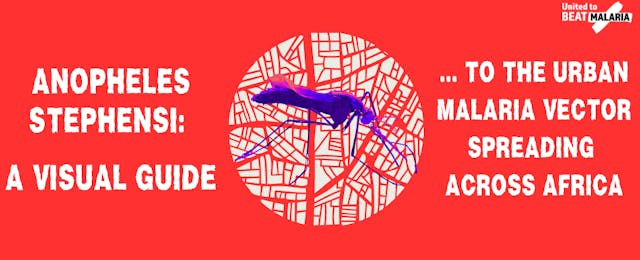
It all started just over a decade ago, likely at the port of Djibouti. It’s believed that a ship unknowingly transported mosquito larvae from Asia to the east African port. This is the prevailing origin story of how an Asian mosquito species – Anopheles Stephensi (An. Stephensi) – started its dangerous spread across Africa. These mosquitoes have since been detected throughout the Horn of Africa and, more recently, in parts of West Africa.
An. Stephensi is a major threat to malaria elimination in Africa, for a number of reasons: it thrives in both urban and rural settings, it spreads malaria year-round (not just during rainy season), and it’s an effective transmitter of the two main malaria parasites (P. falciparum and P. vivax).
To commemorate World Mosquito Day (August 20), all week long we are taking a closer look at this emerging threat. Follow along on our social media and check out the visual guide below.
An. Stephensi mosquitoes are native to south and central Asia, and are the major malaria transmitters in cities across India, Iran and Pakistan, as well as the Arabian Peninsula. They thrive in urban settings, in part because they’re able to breed in a wide variety of water sources, including small containers of water, water tanks, tires, gutters, and irrigation ditches.
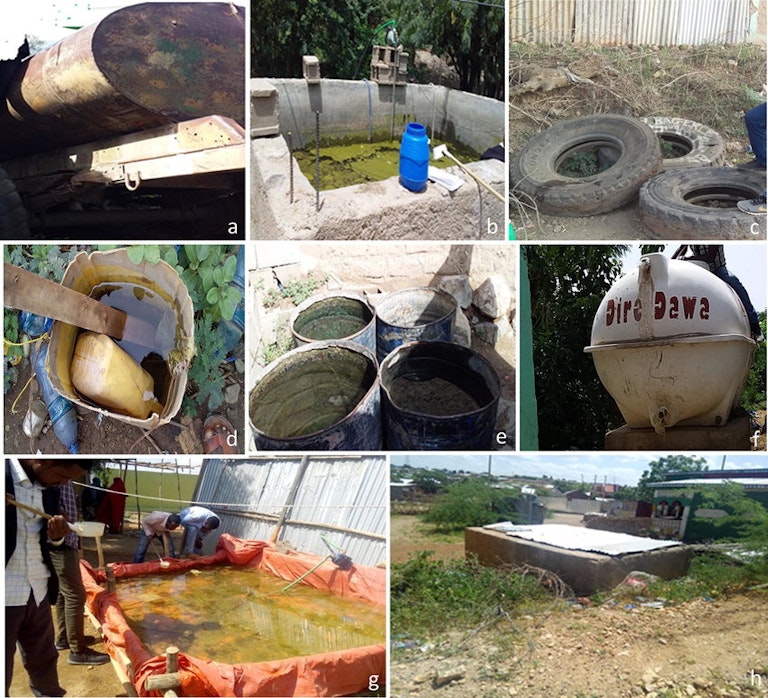
When An. Stephensi arrived in Djibouti in 2012, the country was close to wiping out malaria. Since then, malaria rates in Djibouti have grown exponentially (see graph below) and Djibouti City has experienced several outbreaks. These outbreaks included both P. falciparum and P. vivax malaria cases, a key indicator of An. Stephensi transmission.
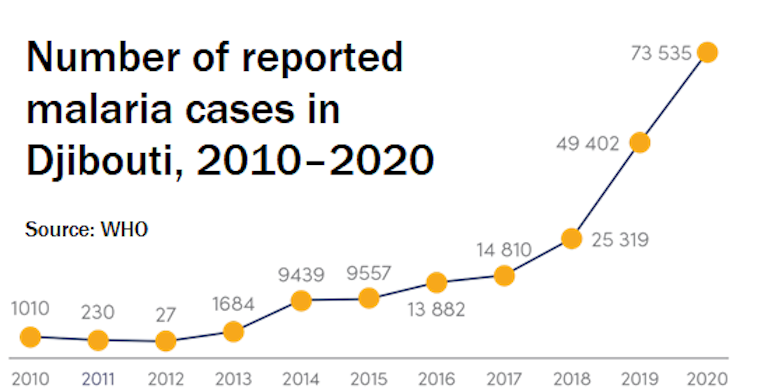
Mosquito surveillance confirmed the rapid spread of An. Stephensi in Djibouti, and would later discover the species had spread throughout the Horn of Africa and beyond. Thus far, the invasive mosquito species has been detected in seven African countries: Djibouti, Ethiopia, Somalia, Kenya, Sudan, Nigeria, and Ghana. See the spread of Stephensi visualized below in the WHO’s Malaria Threats Map.
Source: WHO Malaria Threats Map
The spread of An. Stephensi presents a number of complex challenges. Because An. Stephensi thrives in urban settings and transmits year-round, this invasive vector could significantly alter the landscape of malaria – a predominantly rural disease with predictable seasonal patterns. As urbanization accelerates in Africa, researchers estimate that An. Stephensi could put an additional 126 million people in urban areas at risk of malaria. Below is a heat map of Africa showing areas where An. Stephensi transmission is most environmentally suitable.
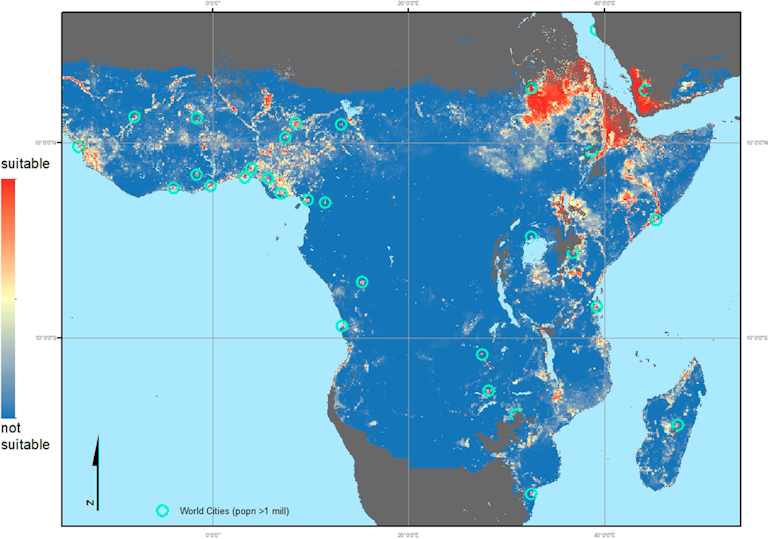
Compounding the problem, An. Stephensi has an unusual resting and feeding behavior that makes it difficult to control with traditional methods – i.e. bed nets and indoor residual spraying. Unlike other malaria vectors that primarily bite at night, An. Stephensi is most active at dusk – i.e. when families generally are not protected by bed nets. Indoor spraying is also less effective against An. Stephensi, which generally rests outdoors – not indoors like other malaria vectors. In addition, An. stephensi exhibits high levels of resistance to certain insecticides. The table below is courtesy of Voice of America.
Furthermore, An. Stephensi is unique in that it transmits both P. falciparum and P. vivax – the latter being far less common in Africa. Therefore, countries with An. Stephensi exposure may need to expand their malaria testing protocol so that Vivax cases aren’t misdiagnosed.
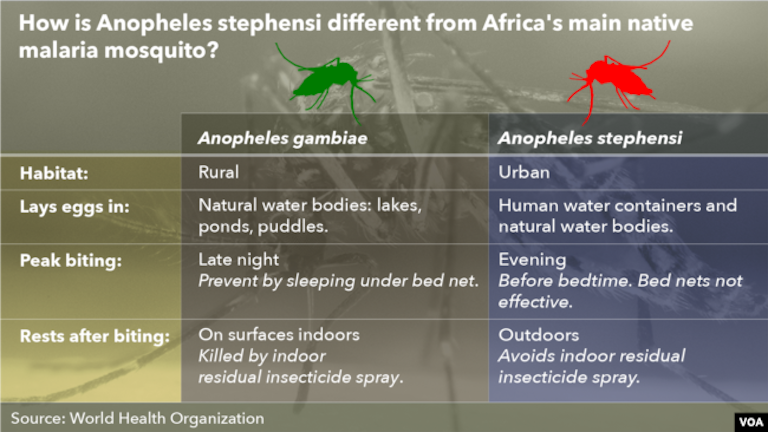
In response to this emerging threat, the World Health Organization (WHO) is working with countries across Africa to strengthen mosquito surveillance, increase collaboration across borders and sectors, improve information exchange, develop evidence-based guidance, and prioritize research – particularly research conducted in Africa – that evaluates the impact of new and existing vector control interventions. Check out the video excerpt below to learn more about the WHO’s action plan.
In addition, the U.S. President’s Malaria Initiative (PMI) has worked extensively with partner countries to ramp up surveillance and larval source management in areas where An. stephensi has been found. PMI’s An. stephensi Task Force has developed an Action Plan around An. stephensi and aligns with the WHO initiative. Further, PMI has created a social behavior change guide to help communities understand how they can control the spread of An. Stephensi.
Source: World Health Organization
Stay tuned all week long as we share more content about An. Stephensi on our social media channels.